Genre: RPG Developer: Sega Enterprises Publisher: Sega Enterprises Players: 1 Released: 1991
Imagine going down the video game isle at Toys ‘R Us in early 1991. You see various Game Boy, NES, TG-16 titles, and of course the Genesis games. Before you’re changed forever by the release of Sonic later in the year, you see plenty of games that catch your eye.
The cover of one particularly stands out. It features a man in a dungeon with a battle axe who obviously looks prepared for a combat, fully decked in battle armor. With all the other box art around, you decide on buying this one. It looks like a fun RPG, a genre that you’ve only briefly tasted playing Final Fantasy at a friend’s house. You grab the giant yellow ticket and take it up to the counter. Soon, the game is in your hands. Fatal Labyrinth is its name, and it looks like you’ve made a wise purchase. The pictures seem to reveal a fun medieval themed RPG. The main selling point, of course, is the words used to describe it on the back of the box. The words promise a fun dungeon adventure, with various creatures to fight and destroy. It promises 30 random levels, which are never the same. It promises replay value, and overall, great pride in helping reveal the goblet, which has been stolen by a dragon. You are TRYKARR, and you must defeat the evil! Adventure and surprise are promised!
You drive home, and quickly put the game in your Genesis. It starts off nicely enough, until you start to play. That’s when you realize Sega has some of the best liars in the world!
You begin as a simple villager with a knife. Stabbing bats and little green booger things (named jellies). Of course, normal stabbing would involve pressing a button to move your weapon. But not here, instead you just hold your D pad in the direction of the bad guy, and that’s it. Unless you’re shooting arrows (which are barely needed), the A, B, and C buttons aren’t used for anything in combat. C brings up the menu, which is where one of the game’s few highlights come from. You have canes and scrolls, which both are used to either hurt an enemy, or find some armor in the next room. Also, it can prevent your armor from rusting.
Yes, rust, from your LEATHER armor. Of course, when you get the steel stuff, that’s when these items should become useful. But I have NEVER experienced rust. Anyway, the game also has assorted rings, which are used mostly to throw at enemies, much like almost anything else you get, making this game mostly a collecting adventure. And if you get a cursed item, just restart your game.
The music is okay at the beginning, but when there are only TWENTY notes repeating over and over, it becomes slightly ear-breaking. Are there small sword-like sounds when you impact a foe? No, that would make the game a bit more bearable. Instead, you get an almost plopping sound when you make a hit, and a ding when you miss. I think a few enemies make sounds when using magic, but that’s about it.
The graphics themselves seem dated, even for a game from 1991. Trykaar moves in small little steps, which can be slowed down if you either grab too much gold (which just buys more homeless guys to cry at your burial), or if you eat too much food. I’ll get to the food fiasco in a minute. Anyway, the basic background is just that, basic. It’s sad, even after the great title screen, and the pretty good look of the town, and we get this simple floor plot. The bad guys have two sprites: one for moving and one for standing still. Moving involves walking and hitting, making it a bit hard to tell exactly what’s going on. Even striking a bad guy is simplified. Want to know when you’re attacking? Just simply see if the two-pixel sword moves a millimeter! If it hits, the bad guy disappears! No dust, no mini explosion, no blinking away. they simply vanish. I guess Sega didn’t have too much money to spend on graphics.
Now, on this whole food thing. To make this game more RPG-like, a system of food, gold, and levels was added. It’s a simple system really, considering that the main game is barely affected by it. The ranking system just basically adds a few hit points, and raises defense a bit, but you’ll still be losing all the time from the 30 diamond thingies shooting magic at you. The food though, is what can really set you off. As you’re walking, you’ll see pot roasts just lying on the ground. Seeing as this is the Middle Ages, Ebola means nothing to you, so eat up! If you DON’T eat up, you go hungry. And if you get too hungry, you die. Now what sets me off so much is how the food works. If you eat too little, you die. If you eat too much, you become a fat slob and walk REEEEEEEALY SLOOOOOOOW, so slow that you can barely attack, and may as well just quit (Quitting may seem like a bad thing, but you’ll be wanting an excuse to stop playing this). The thing is, you can never know exactly how much is too much, as it always seems to be as random as the levels themselves, making things a lot harder than they should be.
And about the whole claim of random levels. Sure, playing the first few times, the levels will seem random and pretty creative. But soon, you will practically have all the maps memorized (down to the last hidden door). This kills any last bit of fun that could have been had.
The last thing here is the difficulty of the game itself. Things may start out easy, but you’ll quickly be stuck in a sleep trap, as your HP slowly melts away, snails slowly touch your ass until you die. Sure, the game is beatable, but it’s barely enough fun to make it worth it. If it were fun, the difficulty could be almost acceptable, but it isn’t.
Overall, it was a good effort, but it seems to have lost something in development, like focus being brought to another project (*cough, Sonic, cough*). I try to like this game, and I kind of do, but in the end, it’s still a stinker.
SCORE: 4 out of 10

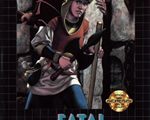
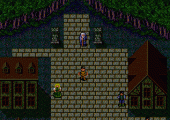
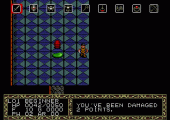
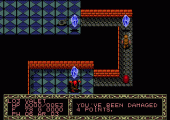
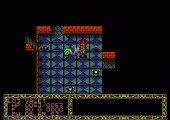
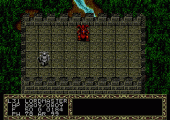
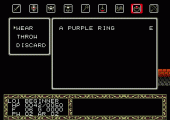
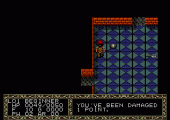
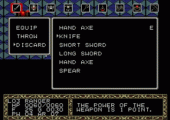
Eh, this game’s not so bad. It’s a Roguelike, so naturally it plays like one and reflects the conventions of the genre. If that’s not to your taste you won’t like Fatal Labyrinth, but if you’ve enjoyed similar computer-based RPGs from the 1980s then it’s familiar/friendly territory.
It’s really not that hard — you just have to proceed cautiously and strike a balance between systematic exploration and pushing on to the next level. And the continue system makes it much more lenient than a true Roguelike. Cursed items are easy to avoid if you to test items right before going up a staircase (which usually clears curse effects), and the food thing is straightforward too, just don’t eat when you’ve got more than 40-50 units and you’ll be fine. BTW rust becomes an issue later in the game, when you encounter an enemy who can melt your equipment away.
The game’s biggest flaws are the super-repetitive music, the lack of a save system (so it takes 4-5 hours in one sitting to beat), and the disappointing final boss fight. In general it lacks bells and whistles, but that reflects its origin as a downloadable title for Meganet — at 128k, the ROM is one of the smallest in the Genesis library.
Anyway, I’d give it either 5/10 or 6/10. It does what it sets out to do, and though a few things could be better (especially the music), it’s a solid example of the Roguelike genre.